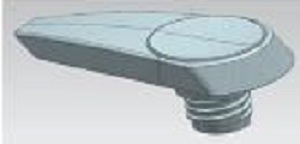|
Polypropylene (PP) is
generally quite difficult to convert into film on the conventional
upward blown film extrusion mainly due to poor melt strength, long
cooling time and somewhat inferior optical properties. The thicker
or heavy-duty PP film is produced from special PP grades of higher
molecular weight with higher amount of other comonomers. However,
blown PP film is not yet commercially developed in place of LDPE/LLDPE
films.
Raw material producers have developed some specific
PP grades that can be processed on conventional upward film extrusion.
One of the grades called RB707F from Borealis is a terpolymer with
random distribution of comonomers. This grade has 1.8MFR and can
produce film with haze value less than 4-5. The clarity is much
better than that can be produced from LDPE/LLDPE. PP film, because
of its higher stiffness provides an opportunity to downguage compared
to LDPE/LLDPE film. The lower thickness further provides better
clarity. Similarly Dow has introduced Inspire 114 for upward blown
film.
Earlier the melt strength of conventional PP was
enhanced by addition of SEBS at about 20% level. However, the cost
of this blend was high and hence the resultant film did not achieve
the competitiveness of LDPE/LLDPE film. The present grades are reactor
made PP elastomers and offer better cost economy. Of course PP offers
higher heat resistance and therefore more suitable for retort packing
or packing of material at higher temperatures. It also offers an
opportunity for better grease resistance compared to LDPE/LLDPE
films.
To achieve better processability, conventional
film extrusion requires some modifications. Some of the major modifications
are: higher L/D ratio (>=30). Die gap should be at least 1.7-1.8mm.
Typically blowup ratio of 2.25-2.5 is required. Internal Bubble
Cooler (IBC) and higher chilled air volumes (at temperatures of
8-10C) help in achieving better quality. These modifications also
help in achieving similar outputs compared to LDPE/LLDPE. The typical
LLDPE film equipments however, can produce PP film from these newer
grades but at about 25-30% lower outputs. Interestingly all the
major film equipment producers like Kiefel or Windmoller are now
supplying film extrusion equipment for PP.
PP films can find increasing usage in IV bags,
retortable pouches, stretch hoods or heavy-duty bags. PP bags can
be used in hot fill packing of products. PP blown film can be used
in place of cast PP film for lamination to PET/PE film for reverse
printing. With these developments PP certainly will make inroad
to the huge LDPE/LLDPE film market in the near future.
Previous Article
Next Article
Tell Us What You Want

Moulds for lotion pump
| | | | 